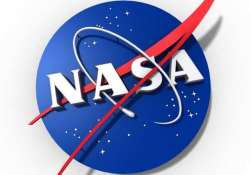NASA seeks students' ideas to land manned probe on Mars
Washington : The US space agency is seeking innovative ideas from students for generating a novel technology that can help land heavy manned spacecrafts safely and swiftly on the surface of Red Planet.Called inflatable spacecraft

Washington : The US space agency is seeking innovative ideas from students for generating a novel technology that can help land heavy manned spacecrafts safely and swiftly on the surface of Red Planet.
Called inflatable spacecraft heat shields or hypersonic inflatable aerodynamic decelerator (HIAD) technology, this will generate a new class of relatively lightweight deployable aeroshells that can safely deliver more than 22 tonnes to the surface of Mars.
Weighing one tonne, the Mars Curiosity rover is the heaviest payload ever landed on the Red Planet so far.
"NASA is currently developing and flight testing HIADs. A crewed spacecraft landing on Mars would weigh between 15 and 30 tonnes,” said Steve Gaddis from NASA's Langley Research Center in Hampton, Virginia.
To slow a vehicle carrying a significantly heavier payload through the thin Martian atmosphere and safely land it on the surface is a significant challenge.
NASA is addressing this challenge through the development of large aeroshells that can provide enough aerodynamic drag to decelerate and deliver larger payloads.
"HIAD technology is a leading idea because these kinds of aeroshells can also generate lift, which would allow the agency to potentially do different kinds of missions,” the space agency said in a statemen.
For this, NASA is inviting university and college students to be part of the its “Breakthrough, Innovative, and Game-changing (BIG) Idea Challenge.”
ALSO READ : NASA releases new Pluto pictures; it has Earth-like mountains, dunes
Interested teams of three to five undergraduate and/or graduate students are asked to submit white papers describing their concepts by November 15.
Concepts may employ new approaches such as shape morphing and pneumatic actuation to dynamically alter the HIAD inflatable structure.
Selected teams will continue in the competition by submitting in the spring of 2016 full technical papers on the concept.
Up to four teams will present their concepts to a panel of NASA judges at the “BIG Idea Forum” at Langley in April 2016.
Each finalist team will receive a $6,000 stipend to assist with full participation in the forum.
NASA's Game Changing Development Programme (GCD) is managed by the agency's Space Technology Mission Directorate in Washington, and the National Institute of Aerospace (NIA).
Washington : The US space agency is seeking innovative ideas from students for generating a novel technology that can help land heavy manned spacecrafts safely and swiftly on the surface of Red Planet.
Called inflatable spacecraft heat shields or hypersonic inflatable aerodynamic decelerator (HIAD) technology, this will generate a new class of relatively lightweight deployable aeroshells that can safely deliver more than 22 tonnes to the surface of Mars.
Weighing one tonne, the Mars Curiosity rover is the heaviest payload ever landed on the Red Planet so far.
"NASA is currently developing and flight testing HIADs. A crewed spacecraft landing on Mars would weigh between 15 and 30 tonnes,” said Steve Gaddis from NASA's Langley Research Center in Hampton, Virginia.
To slow a vehicle carrying a significantly heavier payload through the thin Martian atmosphere and safely land it on the surface is a significant challenge.
NASA is addressing this challenge through the development of large aeroshells that can provide enough aerodynamic drag to decelerate and deliver larger payloads.
"HIAD technology is a leading idea because these kinds of aeroshells can also generate lift, which would allow the agency to potentially do different kinds of missions,” the space agency said in a statement.
ALSO READ : Colliding black holes send funky light signal from space
For this, NASA is inviting university and college students to be part of the its “Breakthrough, Innovative, and Game-changing (BIG) Idea Challenge.”
Interested teams of three to five undergraduate and/or graduate students are asked to submit white papers describing their concepts by November 15.
Concepts may employ new approaches such as shape morphing and pneumatic actuation to dynamically alter the HIAD inflatable structure.
Selected teams will continue in the competition by submitting in the spring of 2016 full technical papers on the concept.
Up to four teams will present their concepts to a panel of NASA judges at the “BIG Idea Forum” at Langley in April 2016.
Each finalist team will receive a $6,000 stipend to assist with full participation in the forum.
NASA's Game Changing Development Programme (GCD) is managed by the agency's Space Technology Mission Directorate in Washington, and the National Institute of Aerospace (NIA).